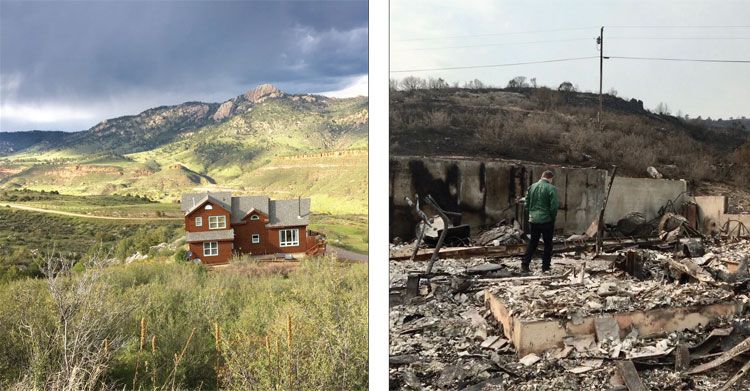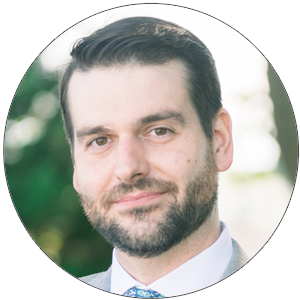‘Unprecedented’: A look back at 2020s Colorado wildfires

Ray Caraway was feeling overly confident.
The former CEO of the Community Foundation of Northern Colorado had been evacuated from his home in Larimer County’s Redstone Canyon due to wildfires several times before with no ill effects.
His luck ran out in 2020, a summer that saw huge swaths of Northern Colorado and the Boulder Valley scorched by wildfires west of Fort Collins and Boulder.
SPONSORED CONTENT
Exploring & expressing grief
Support groups and events, as well as creative therapies and professional counseling, are all ways in which Pathways supports individuals dealing with grief and loss.
Caraway’s home burned to the ground in October.
Thankfully for Caraway and his family, no one was hurt.
In fact, a month earlier Caraway had left Northern Colorado for a new job in New Mexico leading the JF Maddox Foundation. He and his wife were actually on their way back to Colorado to check in on their Larimer County mountain home when they received a call from a first responder.
“I’m sorry, but your house has burned down,” the man said.
Caraway was stunned.
“I’m pretty confident that we were the easternmost house to burn in the entire fire. We were on the edge of the edge,” Caraway told BizWest.
With a rueful chuckle, he added: “We came so close to escaping it.”
Most fiery year on record
Last year, Colorado saw three of its largest wildfires in state history over more than 100 days burning.
The Cameron Peak Fire scorched more than 200,000 acres in Northern Colorado between August and December. Nearly 500 structures were damaged and almost 300 were total losses, according to the Larimer County Assessor’s Office. Personal property damage was estimated at more than $6 million.
The East Troublesome Fire in Grand County was nearly as big, topping 193,000 acres.
The fire began in mid-October and by the end of the month was threatening Rocky Mountain National Park.
It took nearly 50 days to fully contain the blaze.
While not nearly as large, the Calwood fire (about 10,000 acres) was still the most vast in Boulder County history.
Nearly 30 homes were damaged and several thousand mountain community residents were evacuated.
As the Calwood fire was burning, the smaller Lefthand Fire nearby in Boulder County sparked.
Several hundred acres were scorched, and more than 100 residents were evacuated.
Human impacts
Two people died in the East Troublesome fire, representing the most obvious and tragic human impact of last year’s blazes.
But beyond the death and destruction, the 2020 fires had untold human impacts.
Caraway lost many family prized possessions such as works of art and antique furniture passed down from prior generations.
He would have lost more, but his son was able to drive a carload of things away from danger prior to the evacuation.
“He probably could have crammed a few more things in his vehicle” had they taken the threat of losing the house more seriously, Caraway said.
“We had been overconfident, there’s no question about that,” he said.
The loss of Caraway’s home and possessions was just the beginning. Next came the insurance process.
“It’s definitely been a real headache,” he said.
While Caraway said his local agents have been understanding and supportive, his policy was not designed in such a way to allow him to recoup the actual value of his lost home.
“The whole process is designed in such a complex way,” he said. “They don’t make anything simple, and there’s nothing that’s fast about it.”
Caraway said that he’s “a lawyer and I still found it extremely difficult to deal with. I can’t imagine how a typical person would be able to deal with the complexities.”
The biggest stumbling block for Caraway was his policy’s inflation clause, which failed to keep up with recent massive spikes in home values.
This, combined with increasing costs of construction, are making the rebuilding process quite expensive, Caraway said.
But rebuild he will, and Caraway isn’t complaining. In fact, in many ways, he feels lucky.
“We’re in a position where I have a good job, so we’re able to handle it,” he said. “If we had been retired and on a fixed income, I think it would have been much more difficult.”
Beyond the insurance policy-induced headaches, there are other human health impacts that result from wildfires, particularly respiratory issues.
These respiratory problems can actually have increased impact during summers such as in 2021 when wildfire smoke is entering Colorado’s air from far away fires on the West Coast, Colorado State University professor of atmospheric science Jeffrey Pierce said. That’s because, without localized plumes, smoke is less noticeable to the eyes and nose and therefore people are less apt to take precautions such as avoiding outdoor exercise.
“If you’re exposed to high levels of particulate matter throughout your lifetime, your risk of dying of chronic diseases like lung cancer goes up,” Pierce said.
To combat the impacts of smoke, Pierce recommends using hepa filters in air conditioners and wearing air-filtering masks such as the N95 when outdoors during poor air quality periods.
Impacts on the land
“What we’re seeing out there right now is unprecedented,” Colorado State Forest Service watershed program specialist Weston Toll said.
“Many of our forests in Colorado have naturally evolved with fire” and have historically seen low- to moderate-severity fires on a regular basis, he said. “But over the last 100 years, we’ve gotten really good at fire suppression, so we’ve taken that natural process out of the ecosystem.”
Because smaller fires haven’t burned up much of the underbrush, fallen trees stack up and dry, creating conditions more susceptible to large-scale fires that spread to the forest canopy.
As people have spread into the forest with population growth, the chance of a spark igniting the potential tinderbox increases.
“We’re trying to get back to the more historical condition” through forest management and treatment efforts, Toll said, “and mimicking what [smaller] fires would do naturally.”
Forest management can only do so much to reduce the wildfire risk, experts say. The bigger challenge is combating climate change, which is a main driver of increased fires in recent years.
“Taking a holistic approach to how we’re going to be attacking this problem in the future is huge,” Toll said. “A lot of people are realizing how big this threat is as we’ve seen huge swaths of our watersheds going up in smoke.”
And once those swaths are up in smoke, it can take years and even decades to regrow the forests — if those forests can be regrown at all.
In some recent instances, “the fires have become so big and so severe that the trees aren’t coming back like the science has told us they would,” CSU professor of forest stewardship and director of the Colorado Forest Restoration Institute Tony Cheng said.
Fires’ effects on the watershed
The Front Range has struggled with water access for several decades, due in part to an extended period of drought conditions.
Those dry conditions go hand-in-hand with wildfires, according to University of Colorado engineering professor and Cooperative Institute for Research in Environmental Sciences fellow Ben Livneh.
After a wildfire, rivers are “going to be transporting more dissolved organic matter and sediment,” he said. “These are things that require more advanced water treatment and are therefore more costly.
This degradation of water quality, according to Cheng, is exacerbated by the loss of trees, whose root systems provide for natural water filtration.
Those same systems help in water storage as well, he said, so the issue impacts both the quality and quantity of available water along the Front Range.
“Water is a limiting factor for agriculture and any kind of economic growth,” Cheng said.
In addition to issues related to water quality and quantity, wildfires increase the likelihood of mudslides.
“You typically need less rainfall to trigger a landslide after there’s been a fire,” Livneh said.
He calls this type of phenomenon a “cascading hazard.” For example, drought conditions cascade into an increase in the likelihood of wildfires, which in turn cascade into the increased probability of a mudslide.
Mudslides then cause road closures, such as those seen this summer on U.S. Interstate 70, which come with their own set of economic consequences.
Could it get worse?
For the thousands of Coloradans who were evacuated and didn’t lose their lives, the personal toll of wildfires could always be worse.
“Ultimately, if you’re going to have a tragedy in your life, you’re fortunate if it’s purely a material tragedy,” Caraway said.
But can the ecological scale of the state’s wildfires continue to increase by orders of magnitude the way we’ve seen over the past couple of decades?
The answer, experts say, is not really.
“The trendline is pointing to larger and larger fires,” Cheng said. But at a certain point, the natural world begins to impose limits on how much larger these fires can be.
Large wildfires “consume a lot of trees and a lot of vegetation,” so the overall mass of flammable material is reduced following such an event. This reduces the likelihood of another large fire in the area in following years.
Future fires “may burn here and there, but they’re not going to burn with as much size and severity as they have in recent fires,” Cheng said. “They just won’t have enough fuel. That’s just sort of a law of nature.”
This law of nature helps scientists and forest managers prioritize their focus on areas that haven’t burned recently but could be primed to burn in the near future.
“When I look at maps of where those areas are, it’s Rocky Mountain National Park, it’s the stretch between the park [and the area] north of Boulder,” Cheng said.
See related stories.
Ray Caraway was feeling overly confident.
The former CEO of the Community Foundation of Northern Colorado had been evacuated from his home in Larimer County’s Redstone Canyon due to wildfires several times before with no ill effects.
His luck ran out in 2020, a summer that saw huge swaths of Northern Colorado and the Boulder Valley scorched by wildfires west of Fort Collins and Boulder.
Caraway’s home burned to the ground in October.
Thankfully for Caraway and his family, no one was hurt.
In fact, a month earlier Caraway had left Northern Colorado for a new job in New Mexico leading the JF Maddox Foundation.…
THIS ARTICLE IS FOR SUBSCRIBERS ONLY
Continue reading for less than $3 per week!
Get a month of award-winning local business news, trends and insights
Access award-winning content today!


